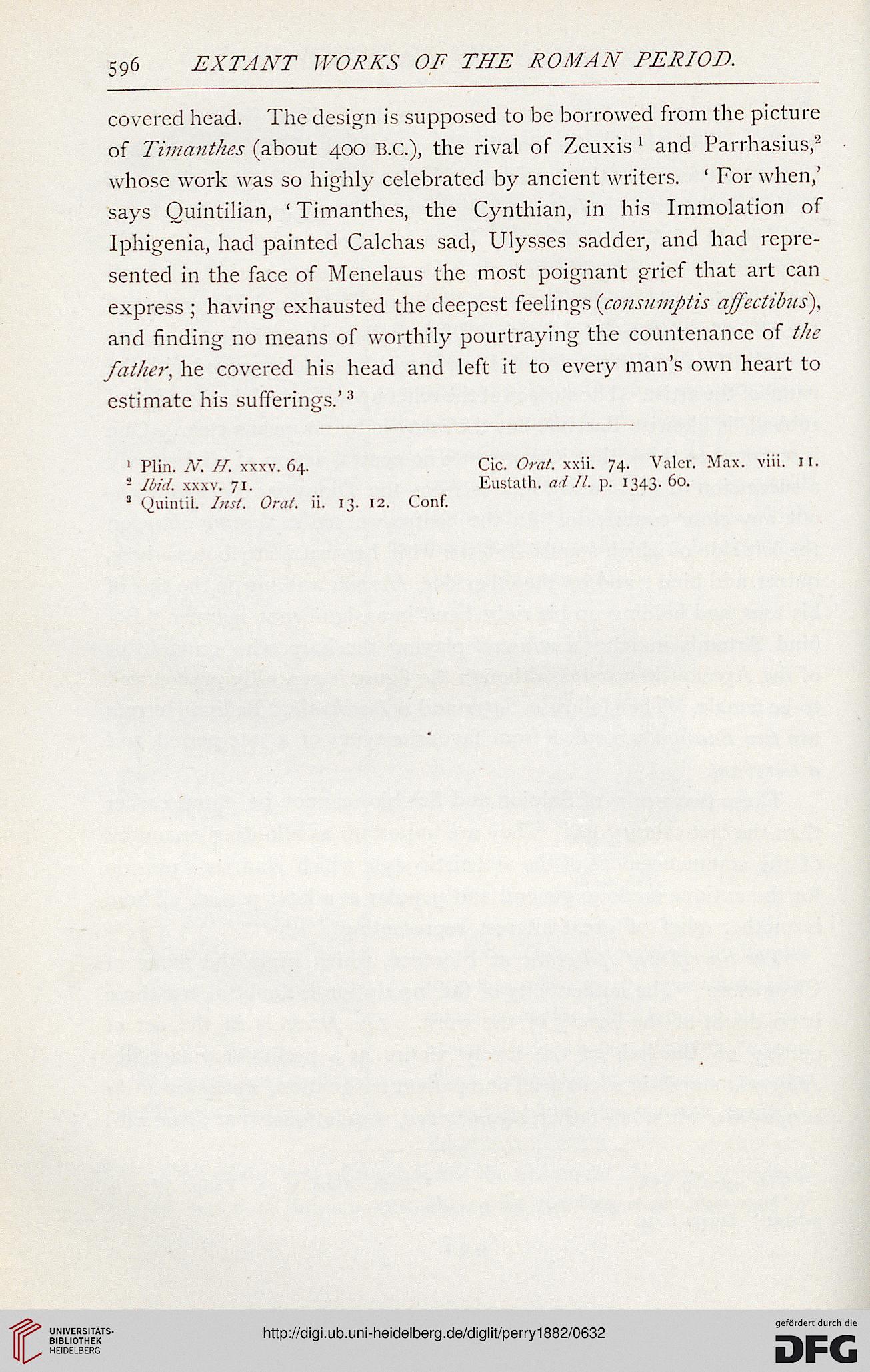596 EXTANT WORKS OF THE ROMAN PERIOD.
covered head. The design is supposed to be borrowed from the picture
of Timanthes (about 400 B.C.), the rival of Zcuxis 1 and Parrhasius,2
whose work was so highly celebrated by ancient writers. ' For when,'
says Ouintilian, ' Timanthes, the Cynthian, in his Immolation of
Iphigenia, had painted Calchas sad, Ulysses sadder, and had repre-
sented in the face of Menelaus the most poignant grief that art can
express ; having exhausted the deepest feelings {cousiimptis affcctilms),
and finding no means of worthily pourtraying the countenance of the
fatJier, he covered his head and left it to every man's own heart to
estimate his sufferings.'3
1 Plin. N. II. xxxv. 64. Cic. Oral. xxii. 74. Valer. Max. viii. 11.
= Ibid. xxxv. 71. Eustath. ad 11. p. 1343. 60.
' Qnintfl. Inst. Orat. ii. 13. 12. Conf.
covered head. The design is supposed to be borrowed from the picture
of Timanthes (about 400 B.C.), the rival of Zcuxis 1 and Parrhasius,2
whose work was so highly celebrated by ancient writers. ' For when,'
says Ouintilian, ' Timanthes, the Cynthian, in his Immolation of
Iphigenia, had painted Calchas sad, Ulysses sadder, and had repre-
sented in the face of Menelaus the most poignant grief that art can
express ; having exhausted the deepest feelings {cousiimptis affcctilms),
and finding no means of worthily pourtraying the countenance of the
fatJier, he covered his head and left it to every man's own heart to
estimate his sufferings.'3
1 Plin. N. II. xxxv. 64. Cic. Oral. xxii. 74. Valer. Max. viii. 11.
= Ibid. xxxv. 71. Eustath. ad 11. p. 1343. 60.
' Qnintfl. Inst. Orat. ii. 13. 12. Conf.




